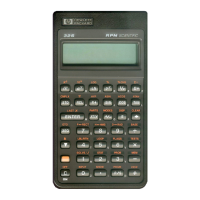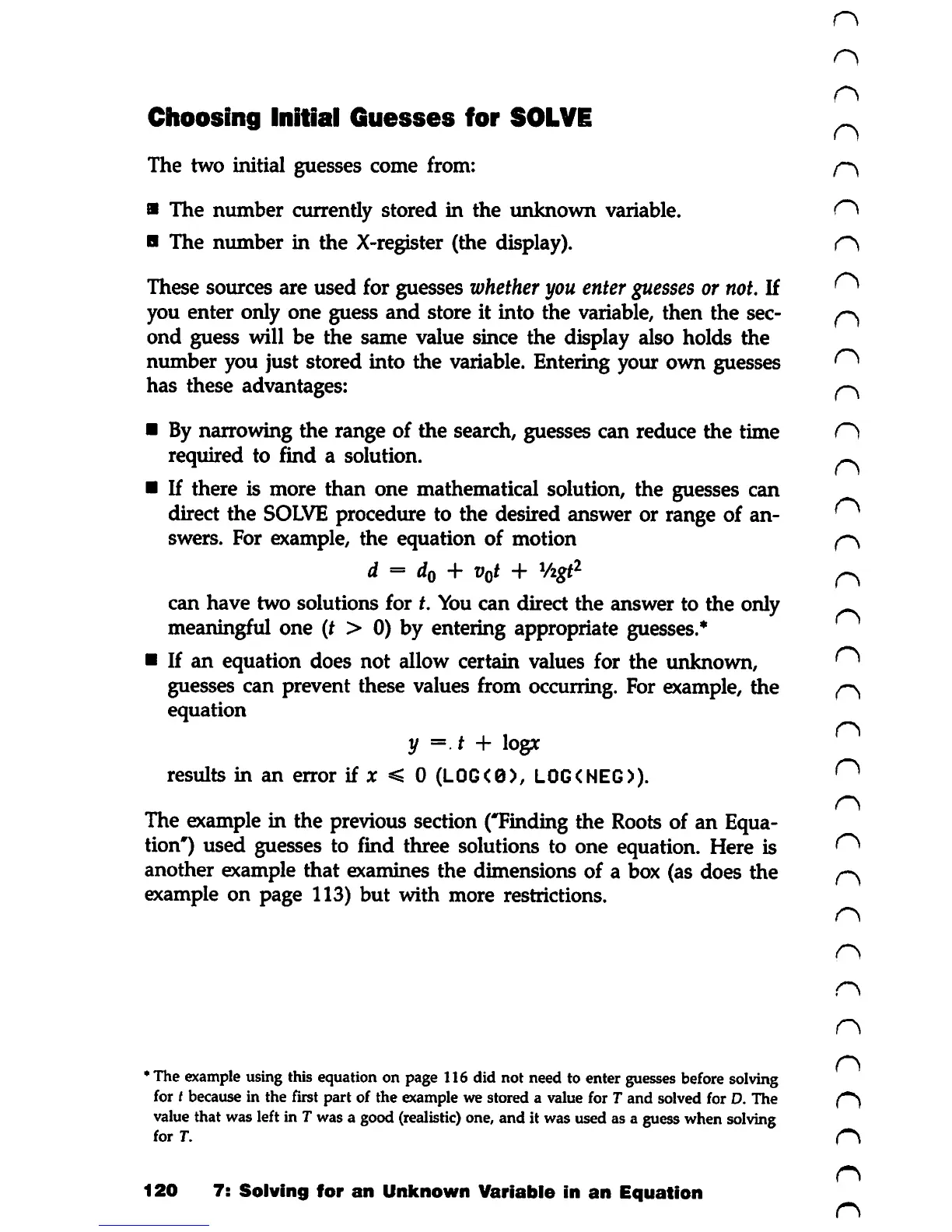Choosing
Initial
Guesses
for
SOLVE
The two initial guesses come from:
• The number currently stored in the unknown variable.
H The number in the X-register (the display).
These sources are used for guesses
whether
you
enter
guesses
or
not.
If
you enter only one guess
and
store it into the variable, then the sec
ond guess will be the same value since the display also holds the
number you just stored into the variable. Entering your own guesses
has these advantages:
• By narrowing the range of the search, guesses can reduce the time
required to find a solution.
• If there is more than one mathematical solution, the guesses can
direct the
SOLVE
procedure to the desired answer or range of an
swers. For example, the equation of motion
d =
d0
+
v0t
+
Vigt2
can have two solutions for t.
You
can direct the answer to the only
meaningful one (t > 0) by entering appropriate guesses.*
• If an equation does not allow certain values for the unknown,
guesses can prevent these values from occurring. For example, the
equation
y
=.t
+ log*
results in an error if x < 0 (LOG<0), L0G<NEG>).
The
example
in the previous section('Finding the
Roots
of an Equa
tion*)
used guesses to find three solutions to one equation. Here is
another example that examines the dimensions of a box (as does the
example on page 113)
but
with
more restrictions.
*The
example
usingthis
equation
on
page
116did not need to enter
guesses
before
solving
for I because in the first part of the example we stored a value for T and solved for D. The
value
thatwasleft in T wasa
good
(realistic)
one,
andit wasusedasa
guess
when
solving
for
T.
120
7:
Solving
ffor
an
Unknown
Variable
in
an
Equation

